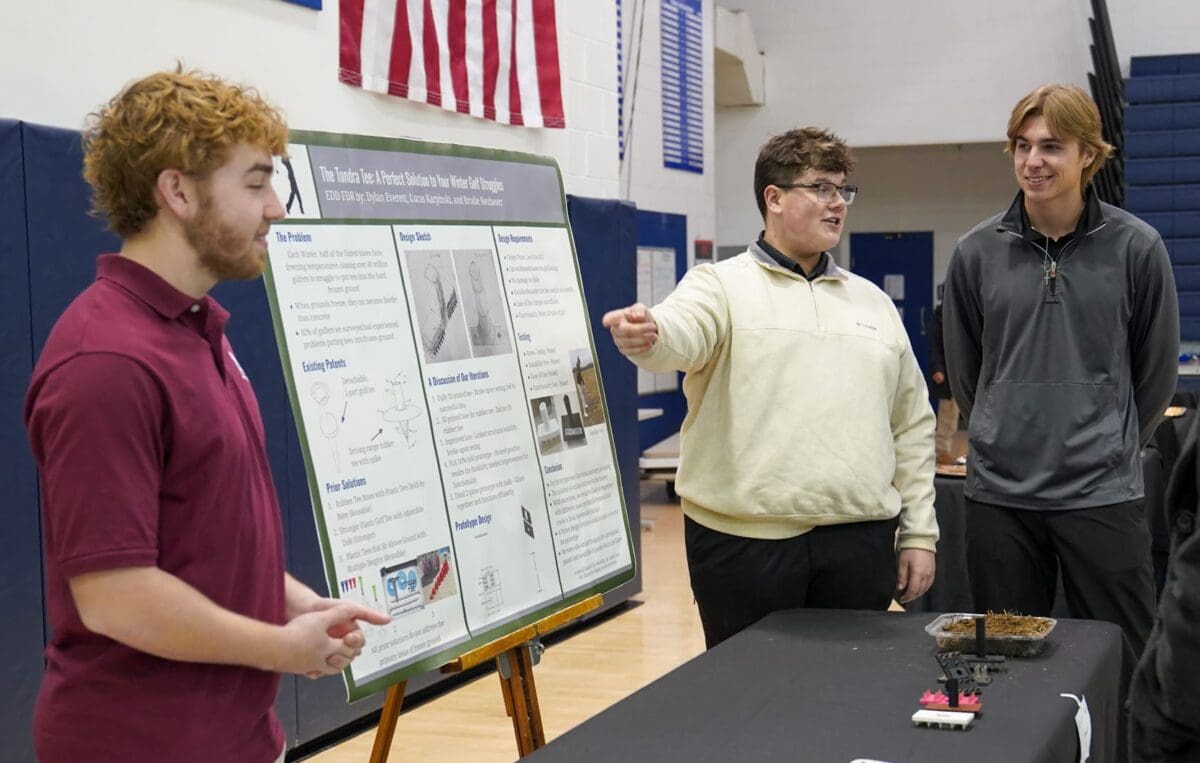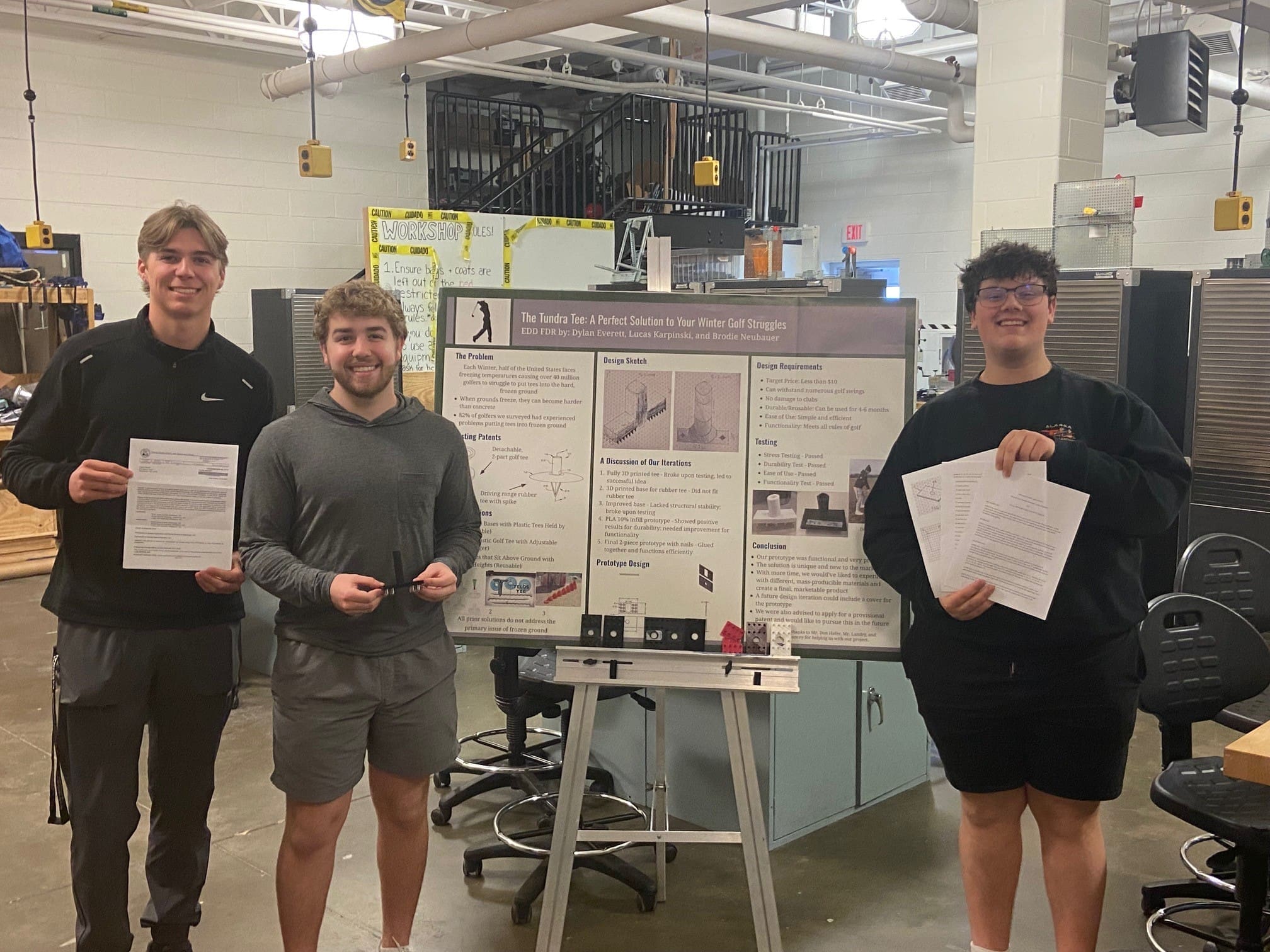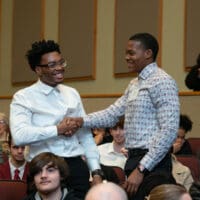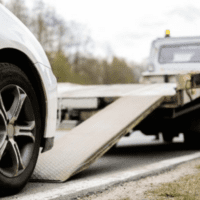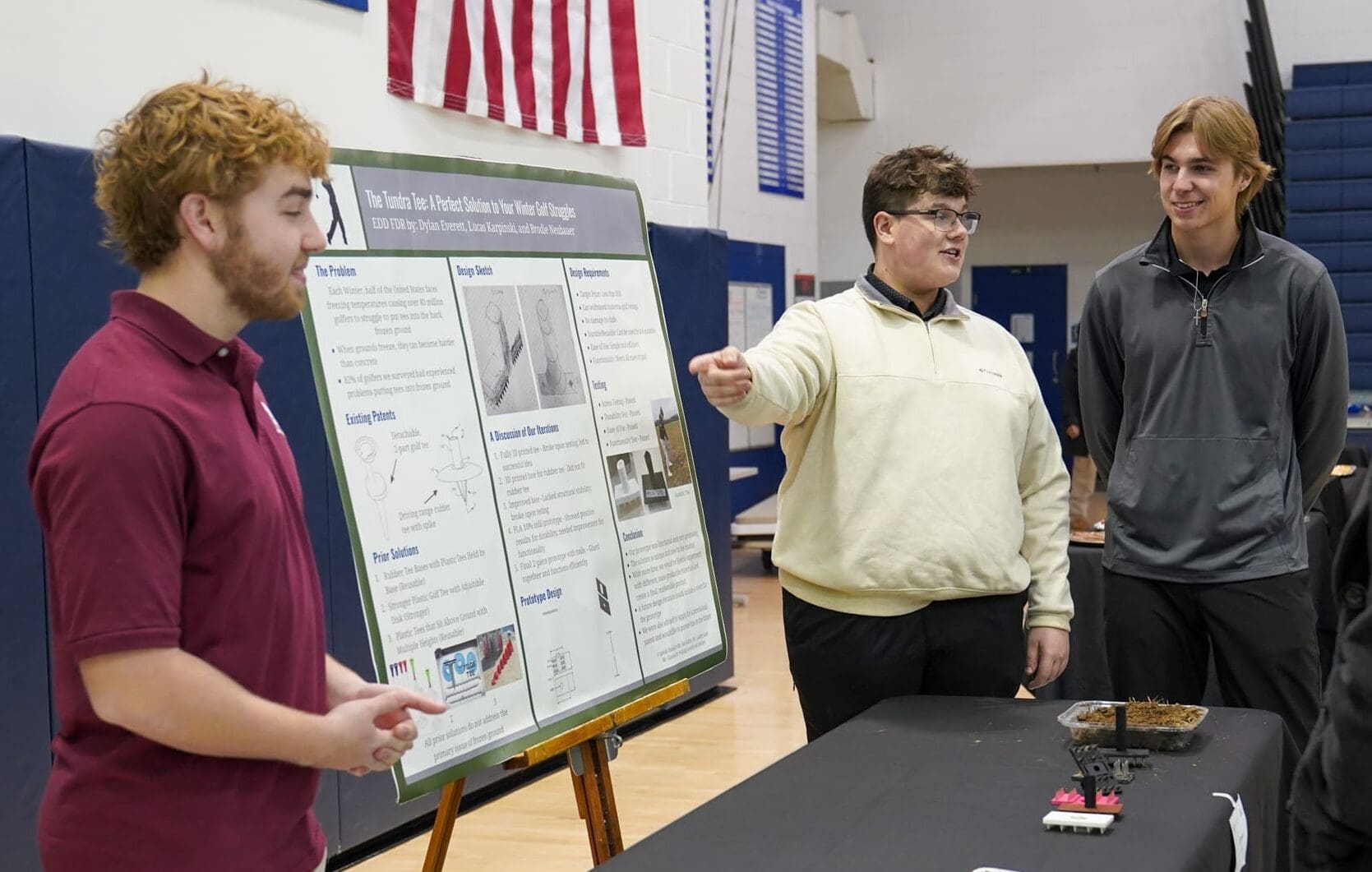

Three students from Appo High are looking to cash in on their patented golf tee design. (L-R; Brodie Neubauer, Lucas Karpinski, Dylan Everett)
Golfing season doesn’t have to be restricted to warm summer days with perfect weather.
A golfing tee designed by three students in the Appoquinimink School District is specially crafted to hold up in cold conditions and not break.
The seniors at Appo High – Dylan Everett, Brodie Neubauer, Lucas Karpinski – who created it were granted a provisional patent this month for their design, and they’re hoping to cash in.
“We’re looking to sell the idea off to somebody else that can manufacture it,” Karpinski said. “The money would be used towards things like college, and although we like the product, it’s going to be too much of a time commitment for college. So still being a part of it and selling it off.
Different types of patents
A provisional patent was granted to the students, which is typically a cheaper and quicker process than filing for a non-provisional patent.
Provisional patents also expire after a year unless a non-provisional patent is filed to keep the patent rights.
A provisional patent is an informal patent application filed with the United States Patent Office, whereas a non-provisional patent application is the formal patent application submitted to the United States Patent and Trademark Office for an invention.
Utility and plant patent applications can be provisional and nonprovisional, but provisional applications may not be filed for design inventions.
A design patent protects the actual design or external look and appearance of an invention; a utility patent protects inventions like processes, systems or machines; and a plant patent protects a new and unique production of a plant.
“We applied for the provisional patent, which is the intellectual property,” Everett said. “We said ‘Hey, this is our idea, we were the first ones that came up with this,’ and then from there, you sell that off or you apply for the actual patent. So we’re just going to wipe our hands clean and kind of sell it off to someone that can take it further than we can with our tiny resources.”
Development
The three have been working on this project all year as part of their engineering capstone project.
“One of the first things we did in the class basically was just try to find a problem, we all brainstormed individually, different problems that we could solve,” Everett said. “Me and Lucas are actually avid golfers, so one of the problems that me and Lucas have had just when we go out and play golf in the winter was that it’s just hard to put tees in the ground sometimes when you play and it’s super cold.”
The students went through a few different designs before settling on one that provided structural integrity and durability, using both metal nails and a 3D printer that provides a rubbery material.
Initially, they used rubber spikes to plant into the ground, but after awhile, some of them would break off, so the plate and structure of the tee is the rubbery plastic, and the spikes that actually go into the ground are metal nails.
“We basically hamburgered the nails in between two plates,” Karpinski said, “and we glued down the plates together.”
There’s also different 3D printing material that the group experimented with, testing the golf tee with Polylactic Acid (PLA) and Polyethylene Terephthalate Glycol (PETG).
“We printed at 10% PLA, we printed 100% PLA, and then we ended up going with what is called PETG, which is just a more impact resistant 3D printing material,” Everett said, “so this just makes it a little bit stronger.”
Reaction to patent
“This is an awesome group of individuals, and they’re great and I kind of rode on the coattails of greatness for this,” said Stephen Landry, an engineering teacher at Appo High who teaches the three students. “I kind of walk them through the design process, and then they all run with it on their own.”
He said the three came up with the idea to apply for a patent after getting great feedback from judges in a design review that included about 85 engineers.
Landry, who’s been an educator for more than a decade, said to his knowledge, this is the first time students have received a patent in Appo’s history.
“I’m super proud of these guys and the work they put in and especially the work they put in after the fact,” Landry said. “Sometimes you’ll see your projects and it’s kind of like ‘Hey, that’s over, we got the passing grade let’s move on,’ but these guys really stepped it up and then accomplished something that doesn’t really happen.”
Karpinski said it was cool to see so many professionals fall in love with their product. He also works at a golf course, and his boss at the course is a potential investor in the tee.
“The idea of going for a patent was always like oh, that’d be cool if we did it,” he said, “but I think after the positive feedback, it really motivated us to go to the next step. I am in love with this project.”
The three appreciate the crossroads of creativity, math and science that engineering can bring – yes, it’s heavily math-driven, but they were able to tap into a creative mindset when inventing a new product design.
I’m not the most creative, but that’s why we work as a team,” Everett said. “This whole project, we all did brainstorming… it’s all the iterations after iterations and the testing, that we all work together and come together to create that final product that really works.”
Karpinski said math has always been his best subject, but he really is most successful in the classroom with hands-on work.
He’s deciding between the University of Delaware and University of Arizona for his next academic endeavor, and he’s debating between majoring in mechanical engineering or industrial engineering.
Neubauer said he’s deciding between Virginia Tech and Embry–Riddle Aeronautical University for aerospace engineering.
Everett’s also looking to pursue aerospace engineering, and he’s interested in either the University of Maryland, Virginia Tech or Georgia Tech.
Kaprinski said the engineering pathway at Appo allows for student-driven classes where, of course there’s deadlines, but students can learn and go at their own pace to be successful.
“This whole curriculum through freshman to now senior year, it’s really just been hands-on and an immersive experience,” he said, “and I would recommend this pathway for anybody.”


Raised in Doylestown, Pennsylvania, Jarek earned a B.A. in journalism and a B.A. in political science from Temple University in 2021. After running CNN’s Michael Smerconish’s YouTube channel, Jarek became a reporter for the Bucks County Herald before joining Delaware LIVE News.
Jarek can be reached by email at [email protected] or by phone at (215) 450-9982. Follow him on Twitter @jarekrutz and on LinkedIn
Share this Post

